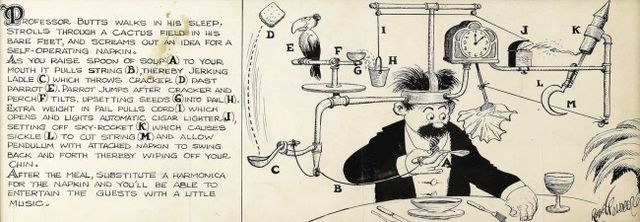Fort Langley, November 2025 – Every three or four months, we at Bannerman Consultants put out a newsletter, typically based on a quartet of third party articles worthy of attention within the engineering community. The newsletter includes a teaser for each article, highlighting what makes it interesting, which isn’t always obvious from the title. Some articles are better than others in hiding what makes them interesting. For this November 2025 newsletter I thought I would extend a few of my thoughts to see if they connect with anyone. What follows here is a companion to the newsletter and its constituent articles, with a slightly different, more informal, and more personal tone.
So what do bullet trains and bullets have in common? They both go straight through watermelons. Also, they both need silencers to prevent a bang when they leave a barrel. Regular trains travelling at more pedestrian speeds, or trains on the prairies without anything through which to bore a tunnel, don’t have this problem. It’s an example of a barrier arising against higher performance, like, say, lack of trust, or maybe lack of a trust fund. Some barriers can be overcome with additional complexity, like a Rube Goldberg device, and some barriers have such a high cost to overcome that the cost outweighs the benefit. Is a maglev train or hyperloop worth the cost from the overall perspective of a passenger? Engineers need to live in the real world.

Maglev’s ‘Tunnel Boom’ Might Be Solved – But Other Issues Mean It’s Unlikely to Come to UK
A field of transportation technology that has developed significantly in a generation is that of electric vehicles. (Also, a field develops in a generation of electricity.) The car may be the Goldilocks of electric vehicles with electric trucks and electric motorcycles being tougher nuts to crack. Although electric motors have fewer moving parts than internal combustion engines, there is a lot more “fuel” management needed, since electric cars need battery cooling (and heating) whereas a gas tank just needs to stay away from matches. A spray park works to cool kids but it’s generally acknowledged that dunking a battery in water is a bad idea. Then again, dunking kids is probably a bad idea too. A simple thermal simuation of water cooling a battery wouldn’t show a problem though because a short circuit won’t feature in a simulation unless you actively model it. You don’t know what you don’t know, or in the case of computer modelling, you don’t know what you don’t ask the computer to tell you. That’s why actual testing is important, or using good engineering analysts instead, or best yet, doing one then the other.
How Electric Vehicles Like Tesla’s, Ford’s & GM’s Keep Batteries Cool
After generations of development, compared to, say, a gas lawn mower, a car engine probably is better in all aspects except for cost, weight, and repairability. However, a lawn mower will probably stick with humble controls that give tactile feedback and don’t require your full attention and it will never switch to capacitive (flat screen) buttons that you can’t use without taking your eyes off trying to spot lawn toys before they get mulched. Despite their intricacies, car engines are so reliable now that they can turn themselves off at a stop light, which, of course, used to be the opposite of reliability. However, now they turn themselves on again when the car needs to move. The increased performance, lower fuel burn in the case of automatically turning off at stop lights, is offset by the complexity of sensors and a control system that needs to think it knows when you want to start moving again. Nevertheless, simplicity benefits reliability and an engine design with six strokes instead of four needs to demonstrate value that compensates for having more potential failure points. One of the reasons good engineers are hard to find is that engineering is an art based on the engineering sciences, and part of that art is choosing how to balance competing interests, like reliability and complexity.

Mazda Patents Bizarre Six-Stroke Gas Engine That Separates Hydrogen From Carbon
The simple life isn’t just for good engineering designs, but also, eventually, for good engineering designers. However, engineers probably spend more time planning for the retirement of assets than they do planning for their own retirement, other than hopefully collecting assets. The hazards of retirement are more about dealing with people, which is typically not the top skill set of engineers and might even drive engineers out of retirement in fear. If the person is the engineer himself, then the engineer is even more likely to be out of his depth. Still, a retiring engineer should know himself and plan accordingly. Knowing is half the battle. Of course if you only prepare for half the battle, you are probably going to loose in the second half.
Cold Feet Retirement: Destination Is Key
So look at the newsletter, read the articles and come to your own conclusions. If in doubt, remember KISS: keep it simple, stupid.
- Martin Fandrich, BASc, PhD, PEng, FIMechE, CEng, FEC


